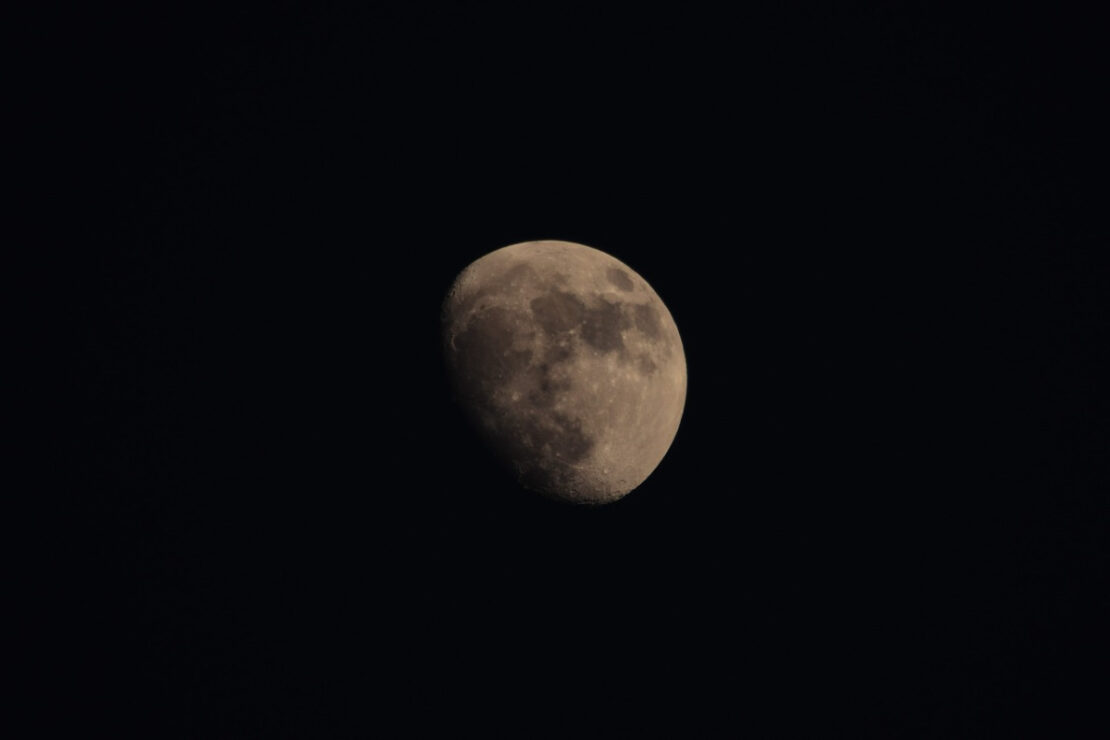
Lunar Herbalism: Plants Associated with the Moon
Studying the relationship between our botanical allies and planetary bodies is another way to understand plant energetics from a broad (perhaps universal!) perspective. This article will explore how certain herbs exemplify and express the qualities of one of our most beloved luminaries, the Moon.
As we deepen our relationship with plants and nature, we may become more attuned to and curious about plant energetics. The energetics of an herb are its subtle effects on the body and mind. Beyond usages and applications, tuning in to the energetics of an herb can provide a richer and more nuanced understanding of how we relate to that herb. There are a number of ways to understand plant energetics: heating/cooling, tonifying/purifying, and moistening/drying being some of the ways in which we understand energetics. Which herbs do you associate with the Moon? Let’s take a look at some of our favorites!
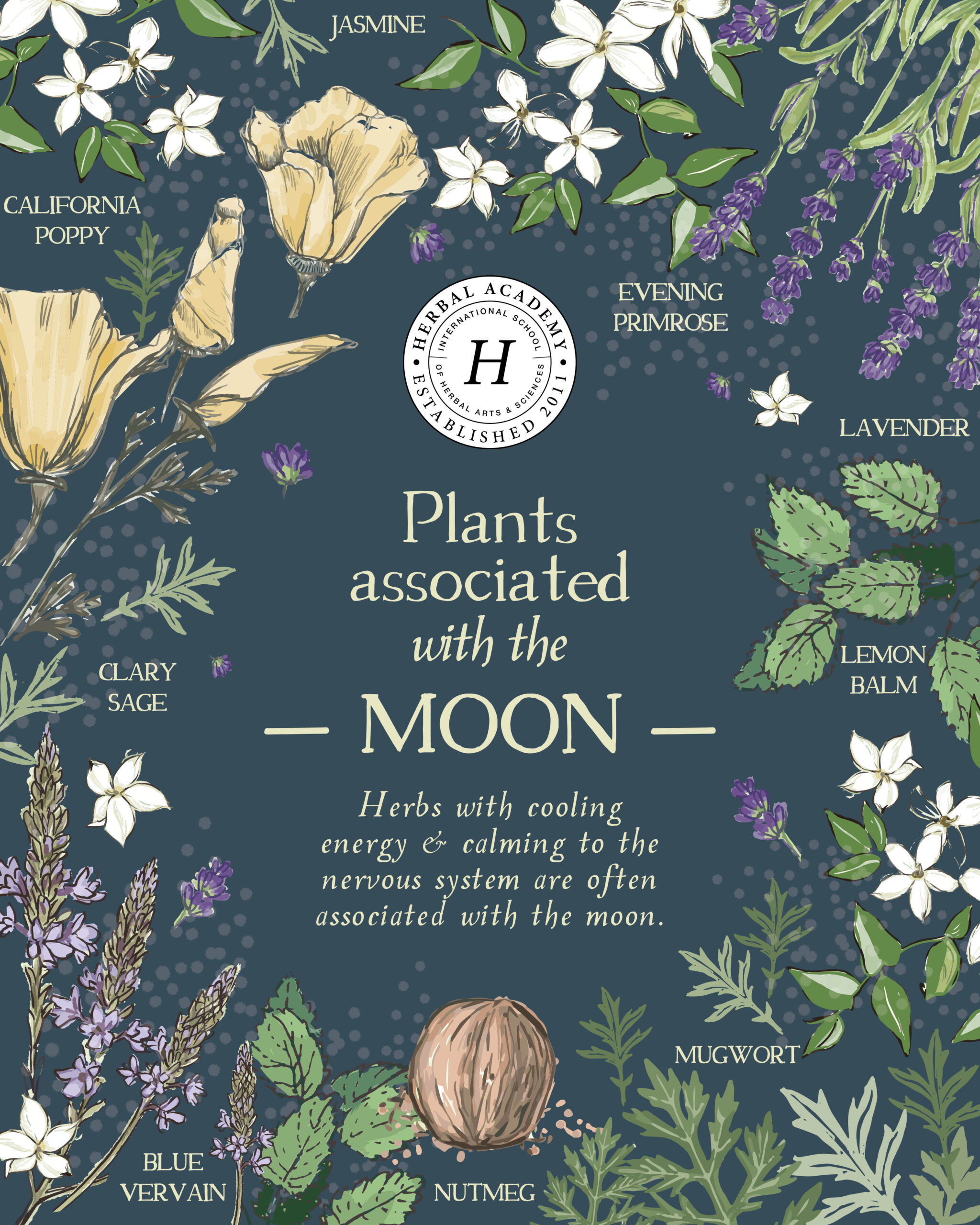
Qualities Associated With the Moon
Before we dive into specific herbs associated with the Moon, let’s think about the qualities of the Moon. The Moon is associated with:
- Cooling energy
- Intuition
- Emotions
- Yin
- Water
- Kapha dosha
- Feminine energy
- Dreams
- Rejuvenation through rest and introspection
- Lunar Herbalism: Plants That Express the Energetics of the Moon
In looking at the above list of qualities associated with the Moon, we can then extend our thinking to plants that exemplify, embody, or promote these qualities. Herbs that calm the nervous system and that have a cooling energy are associated with the Moon. Also, herbs such as mugwort (Artemisia vulgaris) leaf that help us get in touch with our dreams and intuitive nature work synergistically with lunar energy. Some of our favorite herbs that are associated with the Moon include:
Lemon balm (Melissa officinalis)
Jasmine (Jasminum spp.)
Lavender (Lavandula spp.)
Mugwort (Artemisia vulgaris)
Evening primrose (Oenothera biennis)
Clary Sage (Salvia sclarea)
Nutmeg (Myristica fragrans)
Blue Vervain (Verbena hastata)
California Poppy (Eschscholzia californica)
Let’s take a more in-depth look at a handful of these beautiful, beneficial lunar botanicals.
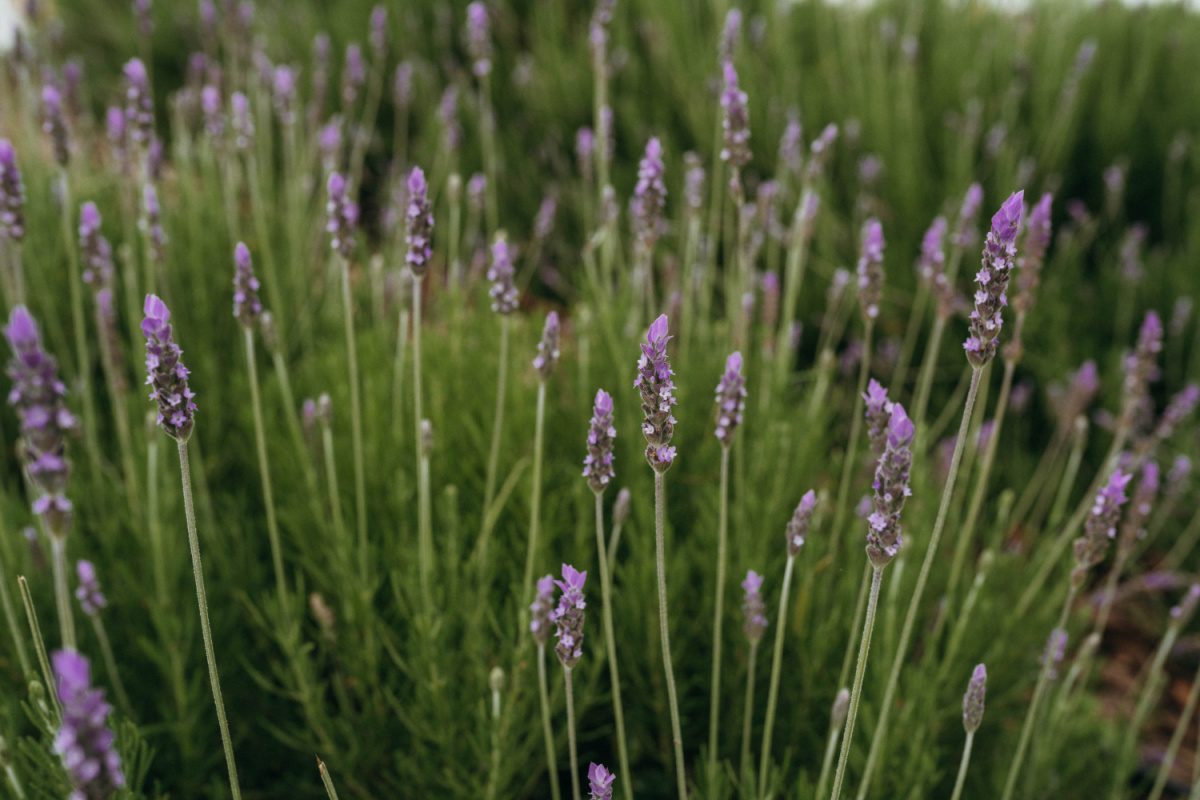
Lavender (Lavandula spp.) Flower Bud
If you are seeking an herb that imparts cooling, calming, soothing energy, look no further than lavender. When it comes to both nervous system and skin troubles, there isn’t much that lavender can’t do. In Ayurveda, lavender is considered to be cooling and purifying (Frawley & Lad, 2001). It is most generally considered tridoshic, meaning it is suitable for all three doshas, though its calming, cooling nature makes it particularly helpful for pitta dosha and pitta excesses, which may manifest as heat, inflammation, and irritation. This understanding of lavender corresponds with its usages in soothing irritated skin and in relaxing the nervous system and thereby supporting emotional calm (Groves, 2016).
Diffuse lavender in the evening or any time you wish to promote a relaxing environment; apply lavender to minor skin irritations and infections (Groves, 2016), incorporate the crude herb or essential oil into skin products and soaps, and enjoy the gently soothing and uplifting taste and aroma of lavender in herbal infusions and baked goods. This lovely little purple flower is truly one of our most versatile and cherished plant friends.
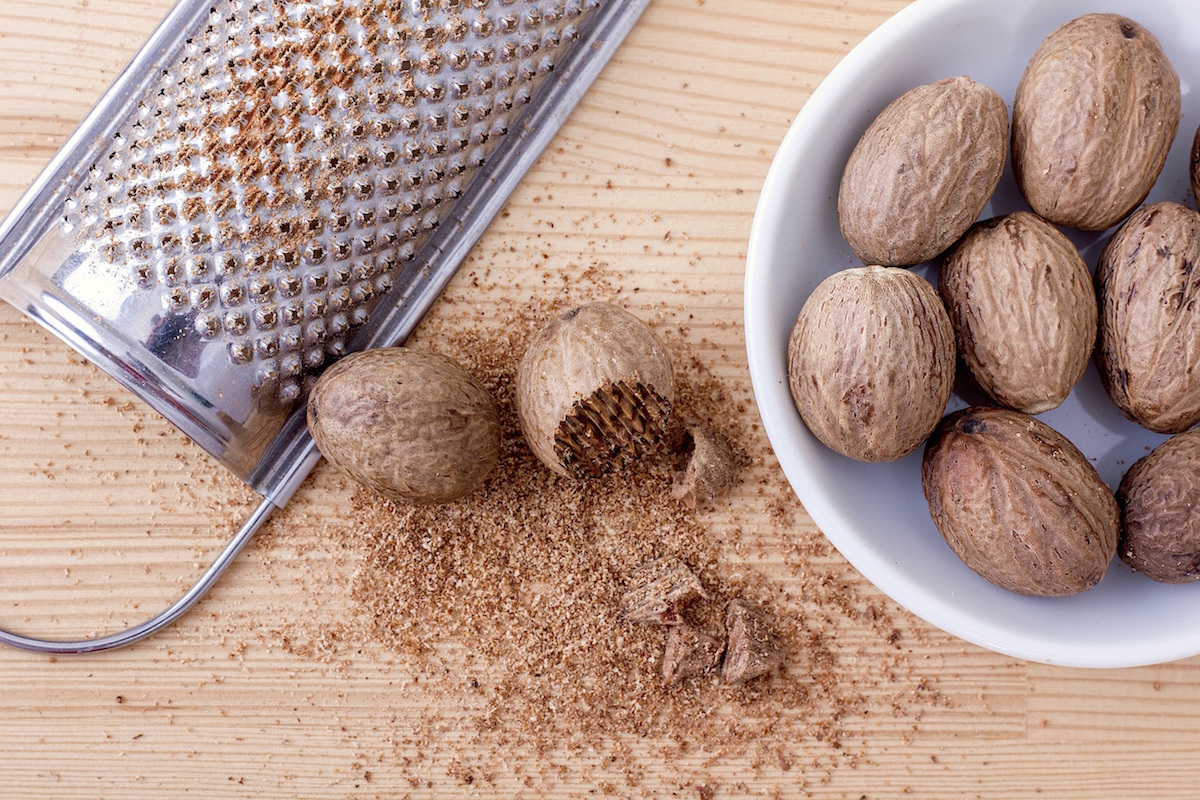
Nutmeg (Myristica fragrans) Seed
If lavender represents cooling, soothing lunar energy, nutmeg embodies the dreamy, wilder side of the Moon. Nutmeg has a heating energy, but can still be associated with the Moon due to its function as a mild sedative and nervine (Frawley & Lad, 2001). Add a pinch of fresh-grated nutmeg to a mug full of golden milk in the evening for a little extra sleep support. Also, nutmeg is a key ingredient in eggnog, so let a touch of nutmeg sprinkled atop golden milk or hot cocoa transport you to cozy holiday evenings by the fireside. Or, make your own eggnog chia pudding during the holiday season or any time you desire a cozy, spicy, decadent yet wholesome treat.
Nutmeg is known for its usefulness as a sedative, astringent, carminative, nervine, and aphrodisiac (Dass, 2013). In addition to promoting sleep, nutmeg can be used to calm excess gas and to soothe mild cases of diarrhea. For this purpose, herbalist and ayurvedic practitioner Vishnu Dass (2013) suggests adding ½ teaspoon of nutmeg to two mashed and steamed apples and eating with a teaspoon of ghee.
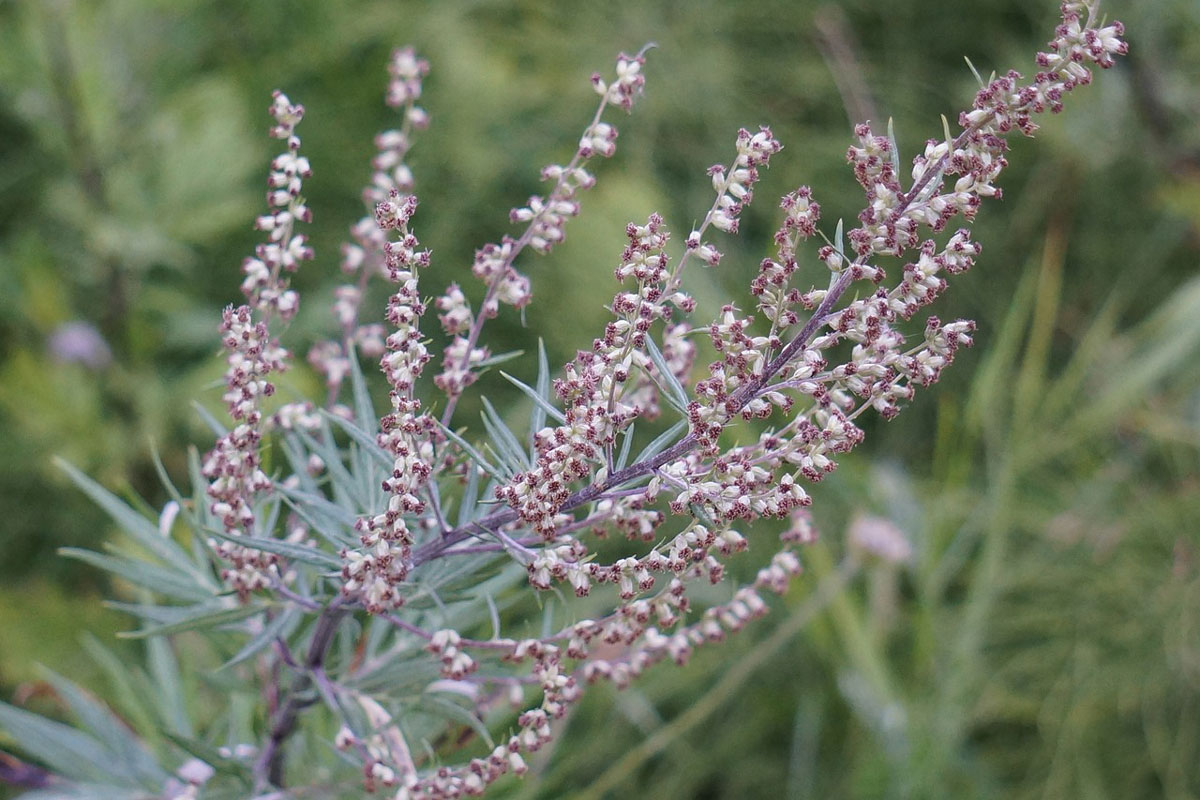
Mugwort (Artemisia vulgaris) Leaf
Used as a nervine and emmenagogue, mugwort is connected strongly to folklore. Some say mugwort derived its name from its function as a drink flavoring (“mug”), and it may also have been used in ancient times for keeping moths away (Grieve, 1931/1971). Mugwort’s mystical usages have included protecting travelers from fatigue, sunstroke, wild beasts, and evil spirits. Lore has it that John the Baptist wore a girdle of mugwort in the wilderness, presumably for protection (Grieve, 1931/1971).
Modern herbalists use mugwort to address a range of issues, such as abdominal pains and excessive menstrual bleeding related to coldness, deficiency and poor circulation, and as a bitter tonic to support the liver and digestion (Tierra, 1988). Mugwort is also linked to dreams and sleep. For more perspective on this topic, you may wish to read the HA blog article, How to Use Mugwort for Sleep, Dreams, and More.
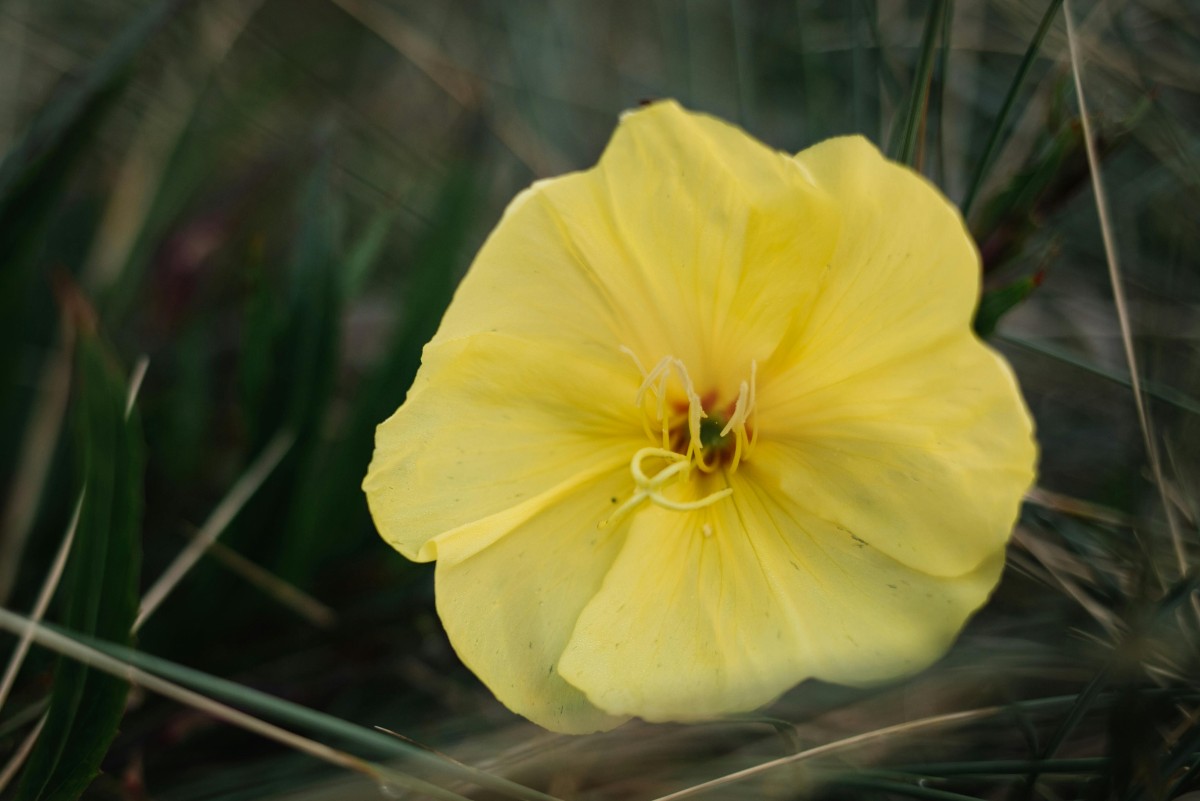
Evening Primrose (Oenothera biennis L.)
Often used for their oil, evening primrose flowers open and diffuse their scent in the evening, hence “evening primrose” and the plant’s lunar association. The oil has anti-inflammatory properties and is a source of omega-6 fatty acids. It is a source of gamma-linolenic acid (GLA) which can play an important role in certain disease processes. Those experiencing atopic dermatitis as well as breast tenderness may benefit from small daily doses of evening primrose oil. Larger doses may be used to address inflammatory and cardiovascular issues (Mills & Bone, 2000).
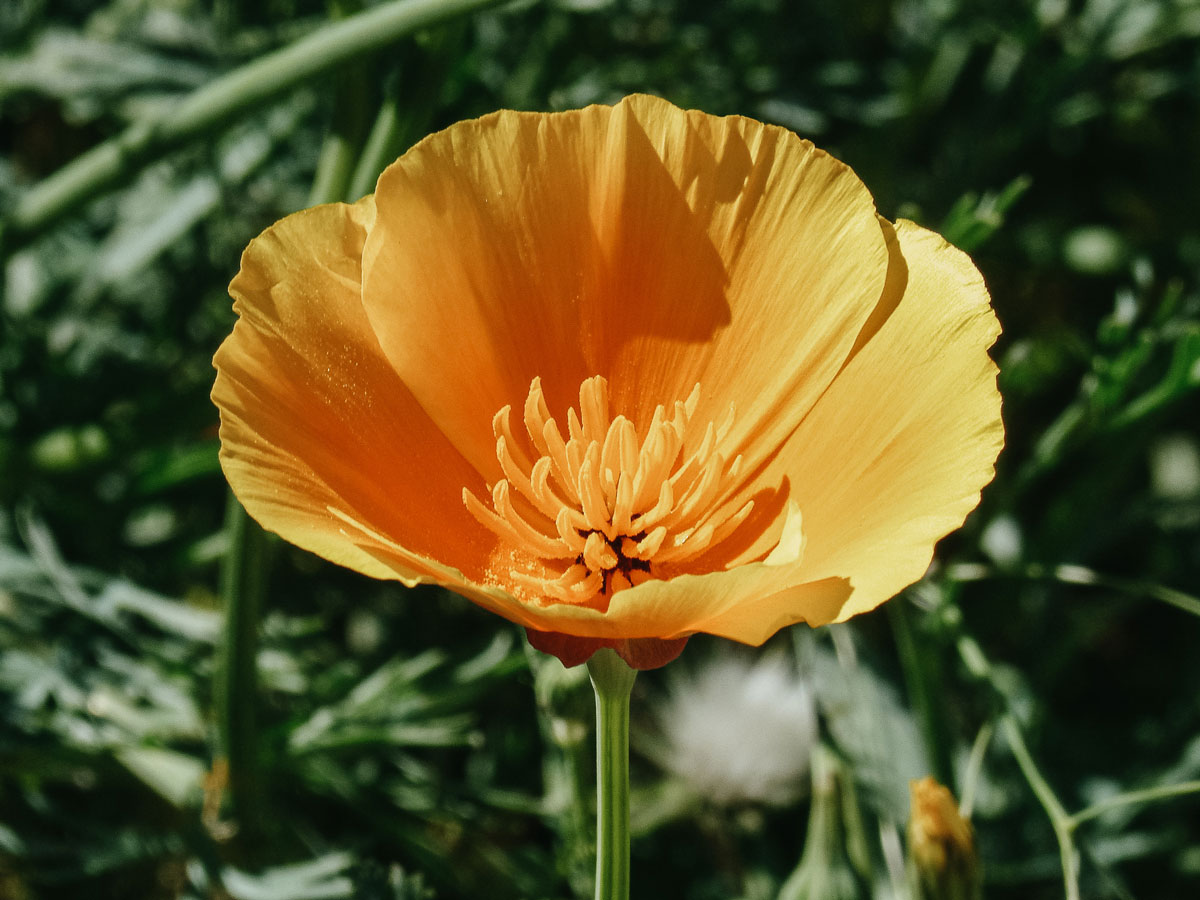
California Poppy (Eschscholzia californica) Aerial Parts and Root
The pleasing orange-gold blooms of the California poppy add dashes of color and cheer to fields throughout California, Mexico, and the Southwest. A tincture made of the aerial parts and fresh root can be used to calm an overactive nervous system and to soothe pain, especially when these troubles keep you up at night (Groves, 2016). Indeed, California poppy works with the dreamy qualities of the Moon—or may help you sleep soundly during Full Moon nights that ramp up your mind and nervous system.

Further Lunar Reflections
If this article has piqued your interest, you may want to further delve into the lunar-plant connection through your own personal experience and herbal reflections. Spend some time with one or more of these herbs associated with the Moon. You may want to keep a journal and note the qualities of the plant and how they may reflect the energetics of the Moon—for you. Also, you may be drawn to different herbs depending on the phase of the Moon.
Plant growth cycles and our own life cycles relate to the phases of the Moon. The New Moon can be likened to planting seeds, the Waxing Moon to sprouts and first shoots, the Full Moon to flowering, and the Waning Moon to bearing fruit and ultimately decomposition to give way for the next germination cycle (George, 1992).
The New Moon is often associated with intention-setting and introversion, the First Quarter phase to taking action on those intentions or metaphorical seeds, the Full Moon with heightened energy and fruition, and the Waning Moon with composting of the old to give way to the next lunation cycle (George, 1992).
For further inspiration on herbs and formulations connected to the Moon and its phases, check out these articles and recipes:
Supporting Creativity and Activity: Herbs for the Waxing Moon
Waning Moon Herbal Mix for Deep Nourishment
New Moon Herbal Mix Recipe for New Beginnings
In Bloom: Floral Tea Recipe for the Full Moon
Also, if you are curious about understanding the Moon’s influence on your energy cycles, you may wish to try keeping a Moon journal. Track the phases of the Moon and/or the astrological sign that the Moon is in and take note of your energy levels, dreams, and even interesting conversations that you have during each phase of the Moon. Just as we need sunlight and activity to thrive—deep sleep, rest, reflection, and tuning in to our intuition are vital to our wellbeing.
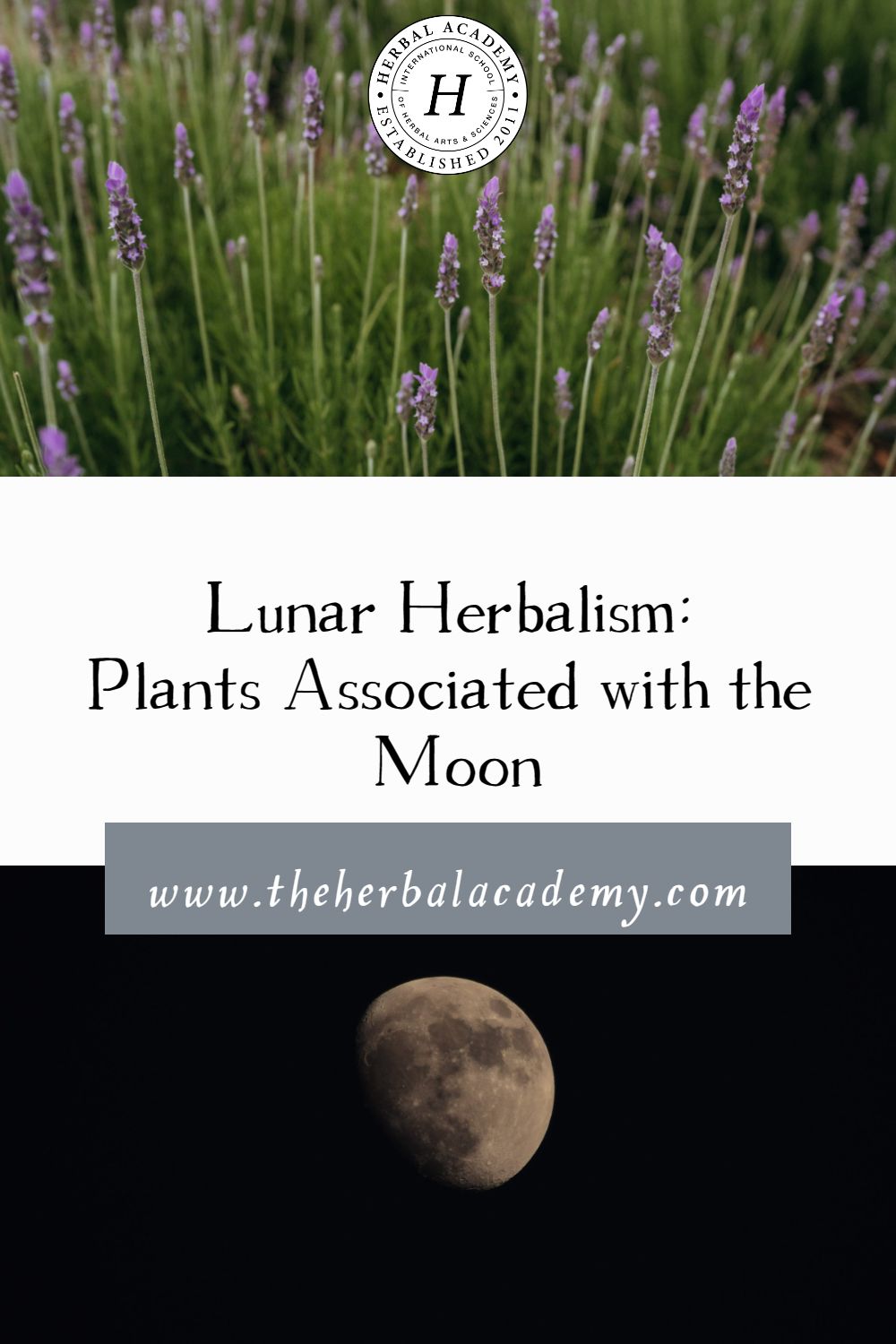
REFERENCES
Dass, V. (2013). Ayurvedic herbology East & West. Lotus Press.
Frawley, D., & Lad, V. (2001). The yoga of herbs (2nd ed.) Lotus Press.
George, D. (1992). Mysteries of the dark Moon: The healing power of the goddess. HarperOne.
Grieve, M. (1971). A modern herbal. (Original work published 1931). Dover Publications.
Groves, M.N. (2016). Body into balance: An herbal guide to holistic self-care. Storey Publishing.
Mills & Bone, (2000). Principles and practices of phytotherapy: Modern herbalism. Churchill Livingston.
Tierra, M. (1988). Planetary herbology. Lotus Press.







